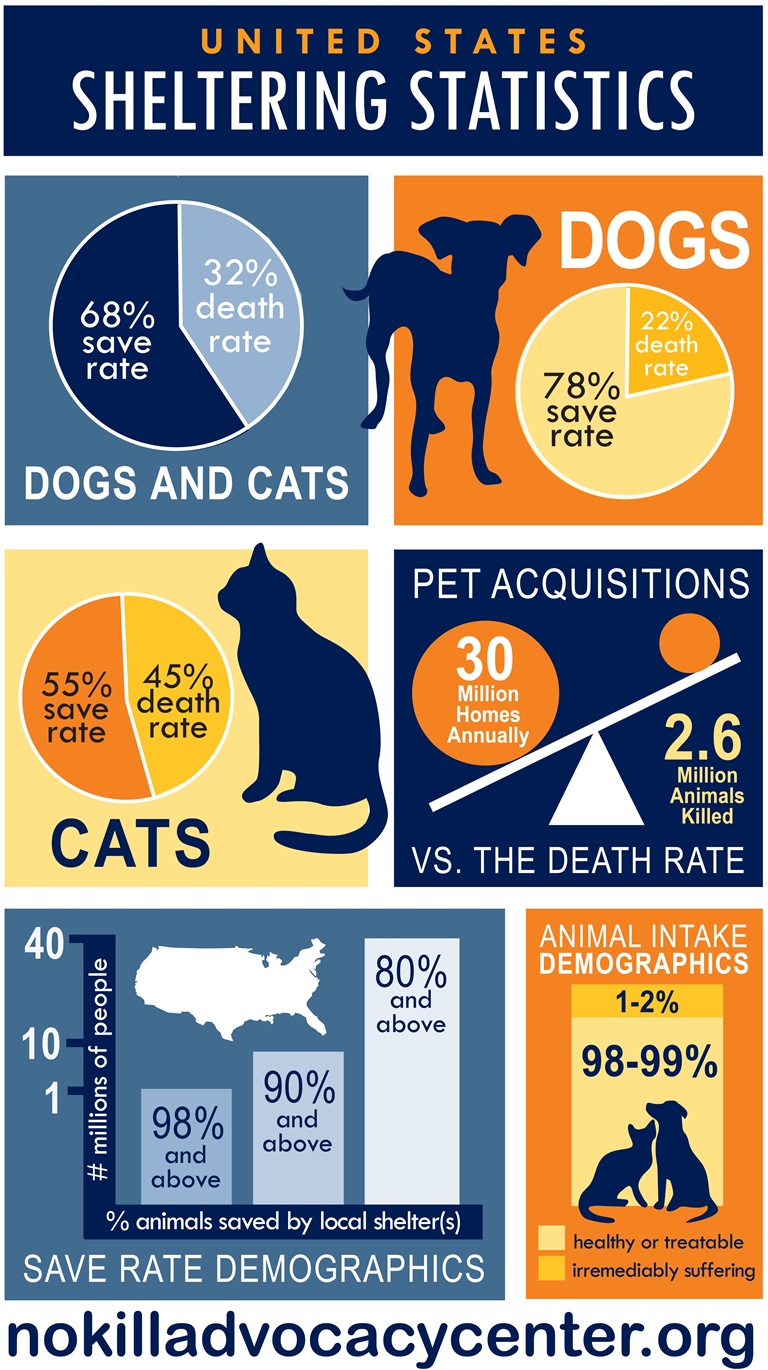
The No Kill Advocacy Center, my organization, has just completed a has just completed a nationwide review of intake and disposition statistics in American shelters using reporting data from states like California, Michigan, Virginia, Colorado, and North Carolina, a database of over 1,000 shelters, and the published databases of other organizations.
According to those findings, the number of dogs and cats killed in U.S. shelters now stands at 2.6 million, down from about four million animals five years ago and the lowest level ever.
Nationwide, almost eight out of every 10 dogs entering shelters are being saved and just over half the cats. Tragically, while the needless killing of healthy and treatable animals continues in many American shelters despite readily available alternatives their directors simply refuse to embrace–such as sterilization of community dogs and cats, working with rescue groups and foster care–these numbers nonetheless indicate a very positive and hopeful trend: the numbers of animals dying in American shelters has been and is continuing to decline. While many shelters still refuse to innovate, others have, and it has dramatically impacted the nation’s overall save rate in a positive direction, including in large cities with historically high rates of killing, such as New York, Miami, and San Antonio.
The news gets better. While 2.6 million are killed, as many as 30 million Americans add a new animal to their households every year, demonstrating the vast, untapped potential for shelter animals and once again disproving the main myth used for over a century to excuse the killing: that there are too many animals for too few homes. When shelters compete for the market share of homes and keep animals alive long enough to find those homes, shelter animals are saved rather than killed.
Not surprisingly, the number of communities saving 80% and higher, 90% and higher, and even 98% and higher is going up, and they all got there the same way: through the implementation of the the No Kill Equation, a series of programs and services that reduce intakes, increase adoptions, and provide alternatives to killing. Some have falsely suggested that our progress means we no longer need to directly challenge regressive shelters. While these figures–which demonstrate that change is possible and the killing is stoppable–should inspire us given how far we’ve come, it also shows that our mandate is clear: work to ensure the wider implementation of the No Kill Equation nationwide. We should be encouraged by our progress–implemented over the objections of the national groups who were forced to evolve their positions to embrace ours–and double down by advocating, legislating, and demanding shelter reform to push the envelope further. To do otherwise, is to sweep over two million animals under the rug and to legitimize continued abuse and neglect.
We’ve won many battles, but we have not yet won the war.
Here are U.S. sheltering statistics at a glance:
- About 8 million animals enter shelters every year.
- Approximately 2.6 million animals (32%) are killed (22% of dogs and 45% of cats).
- Roughly 30 million acquire a new companion animal every year.
- Only 1-2% of shelter animals are irremediably suffering.
- One million people live in communities saving between 98% and 99% of dogs and cats in their shelters.
- About 10 million people live in communities saving between 90% and 99% of dogs and cats in their shelters.
- Over 40 million people live in communities saving at least 80% of dogs and cats in their shelters.
Learn more by clicking here.
To learn what is driving the increased lifesaving, click here.
For those who want proof — just the stats and nothing else — demonstrating that many communities across the country are saving 95%, 99% and in a few cases 100% of the animals, visit saving90.org.
If your community is not one of them, click here for what you can do.
————-
Have a comment? Join the discussion by clicking here.